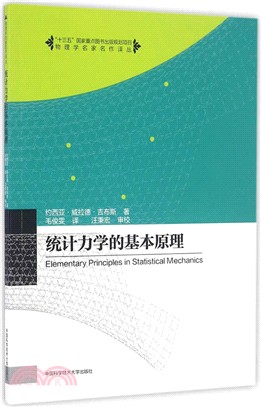A Practical Guide To Scientific Data Analysis
商品資訊
ISBN13:9780470851531
出版社:John Wiley & Sons Inc
作者:Livingstone
出版日:2009/11/20
裝訂/頁數:精裝/358頁
規格:22.9cm*15.2cm*1.9cm (高/寬/厚)
定價
:NT$ 4498 元優惠價
:90 折 4048 元
若需訂購本書,請電洽客服 02-25006600[分機130、131]。
商品簡介
作者簡介
目次
商品簡介
Inspired by the author's need for practical guidance in the processes of data analysis, A Practical Guide to Scientific Data Analysis has been written as a statistical companion for the working scientist. This handbook of data analysis with worked examples focuses on the application of mathematical and statistical techniques and the interpretation of their results.
Covering the most common statistical methods for examining and exploring relationships in data, the text includes extensive examples from a variety of scientific disciplines.
The chapters are organised logically, from planning an experiment, through examining and displaying the data, to constructing quantitative models. Each chapter is intended to stand alone so that casual users can refer to the section that is most appropriate to their problem.
Written by a highly qualified and internationally respected author this text:
* Presents statistics for the non-statistician
* Explains a variety of methods to extract information from data
* Describes the application of statistical methods to the design of “performance chemicals”
* Emphasises the application of statistical techniques and the interpretation of their results
Of practical use to chemists, biochemists, pharmacists, biologists and researchers from many other scientific disciplines in both industry and academia.
Covering the most common statistical methods for examining and exploring relationships in data, the text includes extensive examples from a variety of scientific disciplines.
The chapters are organised logically, from planning an experiment, through examining and displaying the data, to constructing quantitative models. Each chapter is intended to stand alone so that casual users can refer to the section that is most appropriate to their problem.
Written by a highly qualified and internationally respected author this text:
* Presents statistics for the non-statistician
* Explains a variety of methods to extract information from data
* Describes the application of statistical methods to the design of “performance chemicals”
* Emphasises the application of statistical techniques and the interpretation of their results
Of practical use to chemists, biochemists, pharmacists, biologists and researchers from many other scientific disciplines in both industry and academia.
作者簡介
David J. Livingstone is the author of A Practical Guide to Scientific Data Analysis, published by Wiley.
目次
Preface.
Abbreviations.
1 Introduction: Data and it’s Properties, Analytical Methods and Jargon.
1.1 Introduction.
1.2 Types of Data.
1.3 Sources of Data.
1.4 The Nature of Data.
1.5 Analytical Methods.
1.6 Summary.
References.
2 Experimental Design – Experiment and Set Selection.
2.1 What is Experimental Design?
2.2 Experimental Design Techniques.
2.3 Strategies for Compound Selection.
2.4 High Throughput Experiments.
2.5 Summary.
References.
3 Data Pre-treatment and Variable Selection.
3.1 Introduction.
3.2 Data Distribution.
3.3 Scaling.
3.4 Correlations.
3.5 Data Reduction.
3.6 Variable Selection.
3.7 Summary.
References.
4 Data Display.
4.1 Introduction.
4.2 Linear Methods.
4.3 Non-linear Methods.
4.4 Faces, Flowerplots & Friends.
4.5 Summary.
References.
5 Unsupervised Learning.
5.1 Introduction.
5.2 Nearest-neighbour Methods.
5.3 Factor Analysis.
5.4 Cluster Analysis.
5.5 Cluster Significance Analysis.
5.6 Summary.
References.
6 Regression analysis.
6.1 Introduction.
6.2 Simple Linear Regression.
6.3 Multiple Linear Regression.
6.4 Multiple Regression - Robustness, Chance Effects, the Comparison of Models and Selection Bias.
6.5 Summary.
References.
7 Supervised Learning.
7.1 Introduction.
7.2 Discriminant Techniques.
7.3 Regression on principal Components & PLS.
7.4 Feature Selection.
7.5 Summary.
References.
8 Multivariate Dependent Data.
8.1 Introduction.
8.2 Principal Components and Factor Analysis.
8.3 Cluster Analysis.
8.4 Spectral Map Analysis.
8.5 Models with Multivariate Dependent and Independent Data.
8.6 Summary.
References.
9 Artificial Intelligence & Friends.
9.1 introduction.
9.2 Expert Systems.
9.3 Neural Networks.
9.4 Miscellaneous AI Techniques.
9.5 Genetic Methods.
9.6 Consensus Models.
9.7 Summary.
References.
10 Molecular Design.
10.1 The Need for Molecular Design.
10.2 What is QSAR/QSPR?.
10.3 Why Look for Quantitative Relationships?.
10.4 Modelling Chemistry.
10.5 Molecular Field and Surfaces.
10.6 Mixtures.
10.7 Summary.
References.
Index.
Abbreviations.
1 Introduction: Data and it’s Properties, Analytical Methods and Jargon.
1.1 Introduction.
1.2 Types of Data.
1.3 Sources of Data.
1.4 The Nature of Data.
1.5 Analytical Methods.
1.6 Summary.
References.
2 Experimental Design – Experiment and Set Selection.
2.1 What is Experimental Design?
2.2 Experimental Design Techniques.
2.3 Strategies for Compound Selection.
2.4 High Throughput Experiments.
2.5 Summary.
References.
3 Data Pre-treatment and Variable Selection.
3.1 Introduction.
3.2 Data Distribution.
3.3 Scaling.
3.4 Correlations.
3.5 Data Reduction.
3.6 Variable Selection.
3.7 Summary.
References.
4 Data Display.
4.1 Introduction.
4.2 Linear Methods.
4.3 Non-linear Methods.
4.4 Faces, Flowerplots & Friends.
4.5 Summary.
References.
5 Unsupervised Learning.
5.1 Introduction.
5.2 Nearest-neighbour Methods.
5.3 Factor Analysis.
5.4 Cluster Analysis.
5.5 Cluster Significance Analysis.
5.6 Summary.
References.
6 Regression analysis.
6.1 Introduction.
6.2 Simple Linear Regression.
6.3 Multiple Linear Regression.
6.4 Multiple Regression - Robustness, Chance Effects, the Comparison of Models and Selection Bias.
6.5 Summary.
References.
7 Supervised Learning.
7.1 Introduction.
7.2 Discriminant Techniques.
7.3 Regression on principal Components & PLS.
7.4 Feature Selection.
7.5 Summary.
References.
8 Multivariate Dependent Data.
8.1 Introduction.
8.2 Principal Components and Factor Analysis.
8.3 Cluster Analysis.
8.4 Spectral Map Analysis.
8.5 Models with Multivariate Dependent and Independent Data.
8.6 Summary.
References.
9 Artificial Intelligence & Friends.
9.1 introduction.
9.2 Expert Systems.
9.3 Neural Networks.
9.4 Miscellaneous AI Techniques.
9.5 Genetic Methods.
9.6 Consensus Models.
9.7 Summary.
References.
10 Molecular Design.
10.1 The Need for Molecular Design.
10.2 What is QSAR/QSPR?.
10.3 Why Look for Quantitative Relationships?.
10.4 Modelling Chemistry.
10.5 Molecular Field and Surfaces.
10.6 Mixtures.
10.7 Summary.
References.
Index.
主題書展
更多
主題書展
更多書展今日66折
您曾經瀏覽過的商品
購物須知
外文書商品之書封,為出版社提供之樣本。實際出貨商品,以出版社所提供之現有版本為主。部份書籍,因出版社供應狀況特殊,匯率將依實際狀況做調整。
無庫存之商品,在您完成訂單程序之後,將以空運的方式為你下單調貨。為了縮短等待的時間,建議您將外文書與其他商品分開下單,以獲得最快的取貨速度,平均調貨時間為1~2個月。
為了保護您的權益,「三民網路書店」提供會員七日商品鑑賞期(收到商品為起始日)。
若要辦理退貨,請在商品鑑賞期內寄回,且商品必須是全新狀態與完整包裝(商品、附件、發票、隨貨贈品等)否則恕不接受退貨。
































